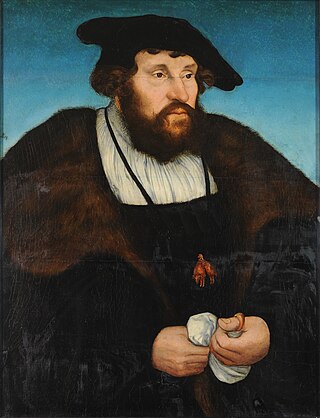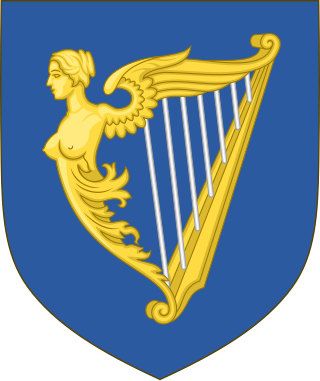Related Research Articles

In modern politics, and history, a parliament is a legislative body of government. Generally, a modern parliament has three functions: representing the electorate, making laws, and overseeing the government via hearings and inquiries. The term is similar to the idea of a senate, synod or congress and is commonly used in countries that are current or former monarchies. Some contexts restrict the use of the word parliament to parliamentary systems, although it is also used to describe the legislature in some presidential systems, even where it is not in the official name.
Absolute monarchy is a form of monarchy in which the monarch rules in their own right or power. In an absolute monarchy, the king or queen is by no means limited and has absolute power, though a limited constitution may exist in some countries. These are often hereditary monarchies. On the other hand, in constitutional monarchies, in which the authority of the head of state is also bound or restricted by the constitution, a legislature, or unwritten customs, the king or queen is not the only one to decide, and their entourage also exercises power, mainly the prime minister.

Nyborg is a city in central Denmark, located in Nyborg Municipality on the island of Funen and with a population of 17,525 (2022). It is the easternmost settlement on Funen. By road, it is located 34 km east of Odense, 35 km north of Svendborg and 21 km south of Kerteminde. It also connects to Korsør through the Great Belt Bridge. Nyborg is the seat of Nyborg Municipality, and until 1793 it was also the seat of Nyborg County.

Christian II was a Scandinavian monarch under the Kalmar Union who reigned as King of Denmark and Norway, from 1513 until 1523, and Sweden from 1520 until 1521. From 1513 to 1523, he was concurrently Duke of Schleswig and Holstein in joint rule with his uncle Frederick.

Valdemar IV Atterdag, or Waldemar was King of Denmark from 1340 to 1375. He is mostly known for his reunion of Denmark after the bankruptcy and mortgaging of the country to finance wars under previous rulers.

Eric "XI" the Lisp and Lame Swedish: Erik Eriksson or Erik läspe och halte; Old Norse: Eiríkr Eiríksson was king of Sweden in 1222–29 and 1234–50. Being the last ruler of the House of Eric, he stood in the shadow of a succession of powerful Jarls, especially his brother-in-law Birger Jarl, whose descendants ruled as kings after his death.
An elective monarchy is a monarchy ruled by an elected monarch, in contrast to a hereditary monarchy in which the office is automatically passed down as a family inheritance. The manner of election, the nature of candidate qualifications, and the electors vary from case to case. Historically, it was common for elective monarchies to transform into hereditary ones over time or for hereditary ones to acquire at least occasional elective aspects.

The Parliament of England was the legislature of the Kingdom of England from the 13th century until 1707 when it was replaced by the Parliament of Great Britain. Parliament evolved from the great council of bishops and peers that advised the English monarch. Great councils were first called Parliaments during the reign of Henry III. By this time, the king required Parliament's consent to levy taxation.

Christopher II was King of Denmark from 1320 to 1326 and again from 1329 until his death. He was a younger son of Eric V. His name is connected with national disaster, as his rule ended in an almost total dissolution of the Danish state.

The Parliament of Ireland was the legislature of the Lordship of Ireland, and later the Kingdom of Ireland, from 1297 until 1800. It was modelled on the Parliament of England and from 1537 comprised two chambers: the House of Commons and the House of Lords. The Lords were members of the Irish peerage and bishops. The Commons was directly elected, albeit on a very restricted franchise. Parliaments met at various places in Leinster and Munster, but latterly always in Dublin: in Christ Church Cathedral, Dublin Castle, Chichester House (1661–1727), the Blue Coat School (1729–31), and finally a purpose-built Parliament House on College Green.

Under the French Ancien Régime, a parlement was a provincial appellate court of the Kingdom of France. In 1789, France had 13 parlements, the oldest and most important of which was the Parlement of Paris. While both the modern French term parlement and the English word parliament derive from this French term, the Ancien Régime parlements were not legislative bodies and the modern and ancient terminology are not interchangeable.
In the Kingdom of England, the Magnum Concilium was an assembly historically convened at certain times of the year when the English baronage and church leaders were summoned to discuss the affairs of the country with the king. In the 13th century, the Great Council was superseded by the Parliament of England, which had developed out of the council. The Great Council was last summoned by Charles I in 1640.

Nyborg Municipality is a municipality in Region of Southern Denmark on the east coast of the island of Funen in central Denmark. The municipality covers an area of 278 km2, and has a total population of 32,098 (2022). It borders Kerteminde Municipality to the north-west, Faaborg-Midtfyn Municipality to the south-west, Svendborg Municipality to the south and is connected to Slagelse Municipality by the Great Belt Bridge. Its mayor is Kenneth Muhs, a member of the Venstre political party. The main town and the site of its municipal council is the city of Nyborg.
A Haandfæstning was a document issued by the kings of Denmark from 13th to the 17th century, preceding and during the realm's personal union with the kingdoms of Sweden and Norway. Following Sweden's independence, similar documents were also issued by its kings. In many ways it is a Scandinavian parallel to the English Magna Carta.
Riksrådet, Rigsrådet or is the name of the councils of the Scandinavian countries that ruled the countries together with the kings from late Middle Ages to the 17th century. Norway had a Council of the Realm that was de facto abolished by the Danish-Norwegian king in 1536–1537. In Sweden the parallel Council gradually came under the influence of the king during the 17th century.

The Diet of Hungary or originally: Parlamentum Publicum / Parlamentum Generale became the supreme legislative institution in the medieval kingdom of Hungary from the 1290s, and in its successor states, Royal Hungary and the Habsburg kingdom of Hungary throughout the Early Modern period until the end of World War II. The name of the legislative body was originally "Parlamentum" during the Middle Ages, the "Diet" expression gained mostly in the Early Modern period. It convened at regular intervals with interruptions from the 12th century to 1918, and again until 1946.
The royal prerogative is a body of customary authority, privilege, and immunity recognized in common law and, sometimes, in civil law jurisdictions possessing a monarchy as belonging to the sovereign and which have become widely vested in the government. It is the means by which some of the executive powers of government, possessed by and vested in a monarch with regard to the process of governance of the state, are carried out.

The Sicilian Parliament was the legislature of the Kingdom of Sicily.

Nyborg Slot is a restored medieval castle in Nyborg on the Danish island of Funen. The castle figures prominently in Danish history. It was here that King Eric V Klipping signed Denmark's first constitution in 1282. The castle was also the venue for the Danehof, the country's first parliament. The castle is operated as a part of Østfyns Museum which also includes Borgmestergården in Mads Lerches Gård.

Until January 1, 2007 Nyborg Municipality was a municipality in the former Funen County, on the east coast of the island of Funen, in central Denmark. The municipality covered an area of 83.57 km2, and had a total population of 19,134 (2006). Its last mayor was Jørn Terndrup, who was a member of the Venstre party.
References
- ↑ Conflict and the Disintegration of the Kingdom (Royal Danish Ministry of Foreign Affairs) Archived January 8, 2007, at the Wayback Machine
- ↑ "Nyborg Slot (Nyborg Museum)". Archived from the original on 2011-10-05. Retrieved 2010-10-25.
- ↑ "Håndfæstning (TV 2 | Danmark A/S)". Archived from the original on 2011-07-19. Retrieved 2010-10-25.